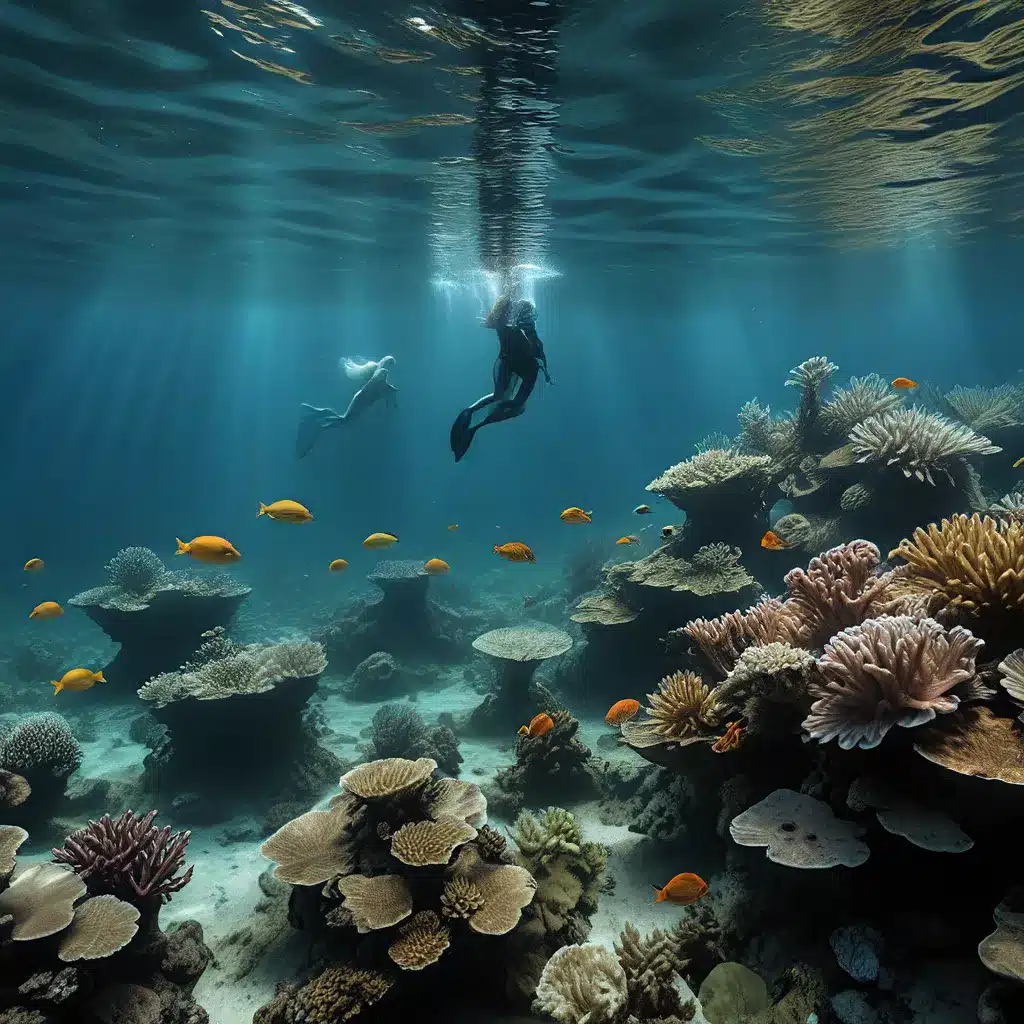
Cultivating a Thriving Aquatic Ecosystem
Maintaining a healthy, balanced aquarium is akin to conducting an orchestra – each element must work in harmony to create a captivating performance. From the careful selection of fish species to the intricate art of aquascaping, every detail plays a crucial role in ensuring the long-term vitality of your underwater haven. In this comprehensive guide, we’ll explore the nuances of species-specific care, the art of aquascaping, and the importance of water management – all with the aim of helping you create an aquatic ecosystem that truly thrives.
Orchestrating the Aquatic Community
The heart of a successful aquarium lies in the delicate balance of its inhabitants. Just as a symphony requires diverse instrumentation to produce a rich, harmonious sound, your aquarium must host a carefully curated collection of fish, invertebrates, and plants that complement one another’s needs.
King Aquarium emphasizes the importance of understanding the specific requirements and behaviors of each species you introduce. Compatibility is key – selecting fish that will coexist peacefully and refrain from aggressive or territorial behaviors is crucial for maintaining a thriving community.
For example, the vibrant Neon Tetra is a peaceful, schooling fish that thrives in well-planted, dimly lit aquariums, while the predatory Angelfish requires ample space and a varied diet to stay healthy. By pairing compatible species and providing them with their optimal environmental conditions, you can create a delicate balance that allows each inhabitant to fulfill its natural role within the ecosystem.
Beyond fish selection, thoughtful stocking density is essential. Overcrowding can lead to increased competition for resources, elevated stress levels, and a higher risk of disease. Striking the right balance between available space, filtration capacity, and the needs of your chosen species is crucial for maintaining water quality and preventing potential conflicts.
Elevating the Aquascape
Just as the arrangement of instruments in an orchestra contributes to the overall musical experience, the design and placement of plants, rocks, and décor in your aquarium plays a vital role in creating a visually stunning and ecologically harmonious environment. This art of aquascaping is a crucial aspect of curating a thriving aquatic landscape.
Skilled aquascapers understand the importance of hardscape elements – the non-living components such as rocks, driftwood, and aquascaping structures. These foundation pieces not only contribute to the aesthetic appeal of the tank but also provide essential hiding spots, territorial boundaries, and nutrient-rich surfaces for the growth of beneficial algae and microorganisms.
Carefully selecting and arranging these hardscape elements can create a sense of depth, perspective, and natural flow within the aquarium. By mimicking the organic shapes and textures found in nature, aquascapers can craft aquatic landscapes that captivate the eye and encourage the healthy development of aquatic life.
Complementing the hardscape, the selection and placement of live plants is a vital component of aquascaping. Choosing a diverse array of plant species, each with its own unique growth habits and care requirements, can help create a lush, balanced ecosystem. From the towering, broad-leaved Amazon Sword to the delicate, feathery Dwarf Hairgrass, each plant plays a role in oxygenating the water, providing shelter, and absorbing excess nutrients – all of which contribute to the overall health and visual harmony of the aquarium.
Maintaining Water Quality
Just as a symphony requires a well-tuned instrument to produce its finest notes, a thriving aquarium relies on the careful management of its water quality. This invisible yet vital aspect of aquarium care is often overlooked, but it is the foundation upon which the entire ecosystem rests.
Proper filtration is essential for maintaining water purity and creating a stable, hospitable environment for your aquatic inhabitants. Mechanical, chemical, and biological filtration work in tandem to remove particulate matter, neutralize harmful toxins, and cultivate beneficial bacteria – all of which are necessary for supporting a diverse and resilient aquatic community.
Equally important is the regular monitoring and adjustment of water parameters, such as pH, temperature, and dissolved oxygen levels. Fluctuations in these key metrics can have a significant impact on the health and behavior of your aquarium’s inhabitants, making it crucial to stay vigilant and make timely interventions when necessary.
Additionally, water changes play a vital role in replenishing essential nutrients, diluting accumulated waste, and preventing the buildup of harmful substances. By implementing a consistent water change routine, you can ensure that your aquarium’s water quality remains optimal, promoting the long-term well-being of your aquatic community.
Harmonizing the Aquatic Symphony
Maintaining a thriving aquarium is akin to conducting a symphony – it requires a delicate balance of diverse elements, each with its own unique role to play. From carefully curating your aquatic community to mastering the art of aquascaping and diligently managing water quality, every aspect of aquarium care contributes to the creation of a vibrant, harmonious underwater ecosystem.
By embracing the principles of species compatibility, thoughtful aquascaping, and meticulous water management, you can cultivate an aquarium that not only captivates the eye but also provides a nurturing, sustainable environment for your aquatic inhabitants to thrive. Remember, every detail matters in the pursuit of aquatic harmony – so approach your aquarium with the same level of care and dedication that a maestro would bring to their orchestra.
Unlock the full potential of your aquatic oasis by exploring the comprehensive resources and expert guidance available at King Aquarium. Embark on a journey of aquatic exploration and witness the beauty that emerges when all the elements of your underwater symphony come together in perfect harmony.

